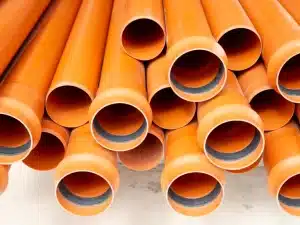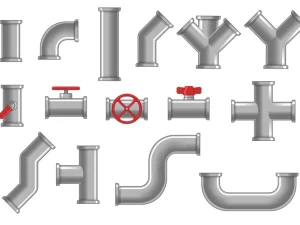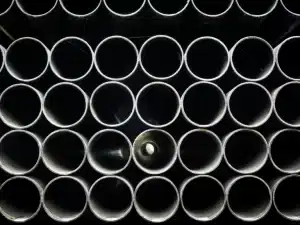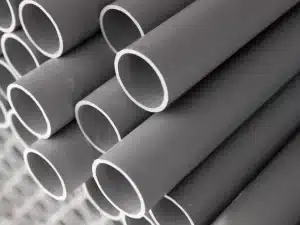How to Maintain and Extend the Lifespan of Ball Valves
Ball valves are crucial in various industries, offering efficient and reliable flow control. Their simple yet effective design, featuring a rotating ball with a bore, makes them highly durable and easy to operate. These valves manage the movement of liquids and gases with minimal pressure drop, making them valuable for industries like chemical processing, water treatment, and oil and gas. Despite their robust nature, ball valves require regular maintenance to function optimally and last longer. Material quality, installation methods, and environmental conditions greatly influence their lifespan. Partnering with floating ball valve suppliers ensures access to high-quality components, reducing operational costs and preventing unexpected failures.
Factors Affecting the Lifespan of Ball Valves
Ball valves are robust and versatile, but several factors can influence their longevity. Here’s a detailed look at the primary factors affecting the lifespan of ball valves:
1. Material Quality and Construction
Material Selection: Selecting the right materials is important for ball valve durability. High-quality options like stainless steel or specialized alloys provide superior resistance to corrosion and wear. Partnering with trusted floating ball valve suppliers ensures durable, high-performance valves.
Manufacturing Standards: Precision in manufacturing and adherence to quality control standards help ensure that components fit well and work reliably over time.
2. Operating Conditions
Pressure and Temperature: Ball valves are designed for specific pressure and temperature ranges. Operating them outside of these limits can accelerate wear or lead to failure.
Flow Conditions: Sudden pressure spikes or water hammer effects can impact the valve’s mechanical integrity, reducing its service life.
3. Maintenance Practices
Regular Inspection: Periodic checks help detect wear, corrosion, or damage early. Proactive maintenance, such as cleaning and lubricating moving parts, can extend the valve’s life.
Seal and Seat Replacement: The seats and seals may wear out over time due to friction and chemical attacks. Timely replacement is important to maintain a proper seal and prevent leakage.
4. Environmental Factors
Corrosive Media: Exposure to corrosive substances (chemicals, saltwater, etc.) can deteriorate metal and non-metal components, leading to premature failure.
Contaminants and Particulates: Debris or particulates in the fluid can scratch the ball or seats, causing erosion and compromising the valve’s sealing capabilities.
5. Installation and Operational Practices
Proper Installation: Incorrect installation can introduce stresses or misalignment, leading to uneven wear or mechanical failure.
Frequency of Use: Ball valves cycled frequently (opened and closed) will experience more wear on their moving parts than those used in less dynamic applications.
Operational Speed: Rapid or forceful actuation can create additional mechanical stress. Smooth, controlled operation tends to prolong valve life.
6. Design Considerations
Type of Ball Valve: Floating ball valves, which rely on a spring-loaded seat for sealing, may experience different wear patterns than trunnion-mounted ball valves, where the ball is mechanically anchored.
Seal Design: Advances in sealing technology (such as resilient seat materials) can mitigate wear and extend operational life, particularly in applications with frequent cycling or harsh conditions.
Routine Maintenance Tips for Ball Valves
A consistent maintenance routine can greatly extend the lifespan and efficiency of ball valves. Here are some essential tips:
Inspect for Leaks: Regularly monitor the valve body and connections for leaks; even tiny leaks can lead to serious complications over time.
Keep the Valve Clean: Remove dirt, debris, and buildup to prevent blockages and ensure smooth operation.
Lubricate Moving Parts: Use the appropriate lubricant to reduce friction, minimize wear, and maintain seamless functionality.
Check Seal Integrity: Damaged or worn-out seals can cause leaks and inefficiencies. Inspect them frequently and replace them when needed.
Operate the Valve Regularly: Periodic use prevents the valve from seizing due to prolonged inactivity, ensuring it remains functional when needed.
Best Practices to Extend Ball Valve Lifespan
Implementing the right strategies can significantly enhance the durability and efficiency of ball valves:
Choose the Right Valve for the Job: Ensure the selected valve matches the required pressure, temperature, and media to prevent premature wear and operational failures.
Source from Reliable Suppliers: Partner with trusted high-pressure ball valve suppliers to obtain high-quality, durable valves that meet industry standards and performance requirements.
Store Valves Properly: Store spare valves in a clean, dry, and temperature-controlled environment to prevent rust, corrosion, and material degradation over time.
Monitor System Pressure and Temperature: Regularly check operating conditions to ensure valves are not exposed to excessive pressure or extreme temperatures that could lead to damage.
Replace Worn-Out Parts Promptly: Inspect valves for signs of wear, leaks, or damage, and replace faulty components immediately to avoid costly breakdowns and system failures.
Common Issues and Troubleshooting Tips
Even well-maintained ball valves can encounter problems. Here are some common issues and their solutions:
Leakage around the Valve: Loose fittings, worn-out seals, or corrosion can cause leaks. Tighten connections, replace damaged seals, and inspect for corrosion to ensure a secure and leak-free seal.
Difficulty in Operation: If the valve is stiff or hard to turn, it may be due to a lack of lubrication or internal debris buildup. Apply the appropriate lubricant and clean the internal components to restore smooth operation.
Corrosion and Rust Formation: Exposure to moisture and harsh chemicals can lead to corrosion. Sourcing high-quality materials from stainless steel ball valve suppliers and applying protective coatings can help prevent rust and extend valve life.
Pressure Drops: A clogged or partially damaged valve can cause fluctuations in pressure, affecting system efficiency. Regular upkeep, including cleaning and timely part replacement, helps sustain consistent pressure and system reliability.
Unusual Noises or Vibrations: Whistling sounds, vibrations, or rattling may indicate trapped air, incorrect installation, or pressure inconsistencies. Bleeding excess air, securing loose connections, and adjusting installation alignment can resolve these issues.
The Role of High-Quality Suppliers in Valve Longevity
Sourcing ball valves from a trusted supplier is crucial for ensuring durability and efficiency. A reliable ball valve supplier offers:
Precision-Engineered Valves: The valves are manufactured with advanced technology and strict quality control to meet industry standards, ensuring reliability in demanding environments and operating conditions.
Premium Materials: This type uses corrosion-resistant materials such as stainless steel, high-grade alloys, and specialized coatings to enhance durability and prevent rust or degradation over time.
Customization Options: Customized solutions are provided for industrial requirements, including high-pressure, high-temperature, or chemically aggressive applications.
Technical Support: Assisting with proper installation, routine maintenance, and troubleshooting to help optimize valve performance and extend service life.
Partnering with reputable floating ball valve suppliers reduces the risk of premature failures, improves system efficiency, and ensures long-term cost savings.
Ensuring Long-Term Performance of Ball Valves
Maintaining and extending the lifespan of ball valves requires a combination of high-quality products, proper installation, and regular upkeep. Understanding the factors affecting durability and following best practices can prevent costly failures and downtime. By sourcing from reliable high-pressure ball valve suppliers, industries can ensure long-term performance and efficiency.
Routine inspections, cleaning, lubrication, and timely replacements are crucial in keeping ball valves in optimal condition. Investing in superior-grade valves from reputable stainless steel ball valve suppliers provides a long-term, cost-effective solution for various industrial applications.
FAQs
What are the key steps to maintain a ball valve?
Regular Inspections: Check for leaks, corrosion, or wear to catch issues early.
Keep It Clean: Remove dirt, debris, or buildup that could affect performance.
Lubricate Moving Parts: Apply the recommended lubricant to ensure smooth operation and prevent sticking.
Operate Periodically: Occasionally, open and close the valve to prevent seizing, especially in infrequent-use applications.
Store Properly: Keep in a dry, clean environment to protect against rust and contamination.
How often should ball valves be inspected for maintenance?
Ball valves should be inspected every few months, depending on usage and operating conditions. High-pressure or high-temperature applications require frequent checks to detect wear, leaks, or damage early, ensuring reliable performance, preventing failures, and extending the valve’s lifespan.
What are the common causes of ball valve failure?
1.Corrosion and rust due to harsh chemical exposure.
2.Wear and tear from high-pressure applications.
3.Seal degradation leads to leaks.
4.Improper installation causes misalignment and stress.
How can I prevent corrosion in ball valves?
To prevent corrosion in ball valves, choose corrosion-resistant materials like stainless steel and apply protective coatings for added durability. Sourcing from reputable floating ball valve suppliers ensures high-quality valves that withstand harsh conditions, reducing the risk of corrosion and extending their lifespan.







